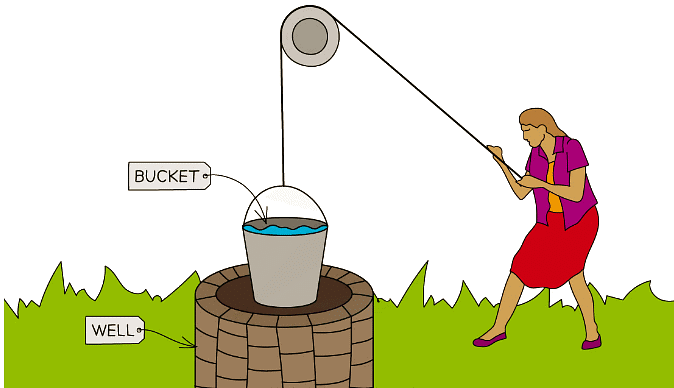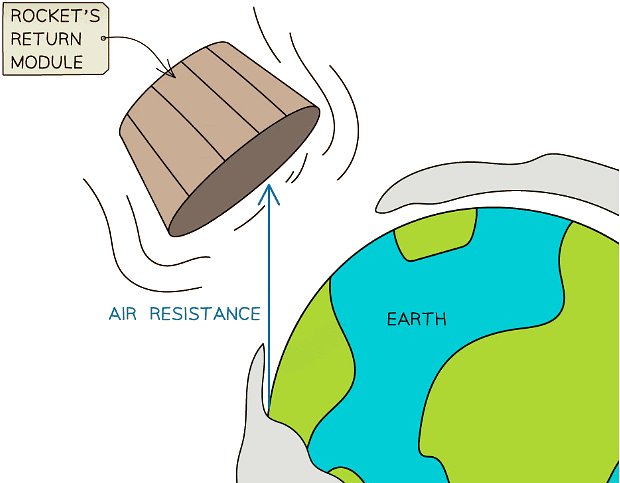Work Done, Energy Transfer & Friction | Physics for Grade 10 PDF Download
| Table of contents |

|
| Units for Work & Energy |

|
| Work Done & Energy Transfer |

|
| Solved Example |

|
| Work & Friction |

|
| Air Resistance |

|
Units for Work & Energy
- The formula for work is:
W = F × s - Multiplying force and distance produces units of newton-metres (N m)
Work is measured in Joules (J) - This leads to a simple conversion:
1 J = 1 N m - Therefore, the number of Joules is equal to the number of newton-metres, making conversions between the units very straightforward, for example:
1000 J = 1000 N m - One Joule is equal to the work done by a force of one newton acting through one metre
Tip
You must include the correct units in your answer, forgetting to include units will lose you a mark - in the case of work, you may use either newton-metres (N m) or Joules (J)
Work Done & Energy Transfer
- Whenever any work is done, energy gets transferred (mechanically) from one store to another
- The amount of energy transferred (in joules) is equal to the work done (also in joules)
energy transferred (J) = work done (J) - If a force acts in the direction that an object is moving, then the object will gain energy (usually in the form of kinetic energy)
- If the force acts in the opposite direction to the movement then the object will lose energy (usually as heat)
- Common forms of energy that work can be transferred to:
- Kinetic Energy, when speeding an object up
- Gravitational Potential Energy, when raising an object higher
- Thermal Energy, in heating the object up
- Sound Energy, in producing noise
- Take the example of an object which is pushed horizontally with a 100 N force a distance of 10 m
- The work done on the object is equal to:
W = F × s
W = 100 N × 10 m = 1000 N m - This work transferred energy to the object in the form of kinetic energy
- The object started with no kinetic energy and now has 1000 J of kinetic energy
Tips
Remember:
(i) Changes in speed are related to kinetic energy
(ii) Changes in height are related to gravitational potential energy
(iii) Changes in the shape of materials are related to elastic potential energy
Solved Example
Example: A woman draws a bucket up out of a well. The bucket has a mass of 10 kg when filled with water and the well is 15 m deep. Take the gravitational field strength to be 9.8 N/kg.
 (a) Describe the energy transfer involved in raising the bucket out of the well
(a) Describe the energy transfer involved in raising the bucket out of the well(b) Calculate the energy transferred to the bucket
Part (a)
(i) Work is done by the woman as she exerts a force on the rope to pull the bucket up
(ii) The work done on the bucket is due to overcoming the weight of the bucket for a distance of 15 m
(iii) As the bucket rises, the work done is stored as gravitational potential energyPart (b)
Step 1: List all of the known values
Mass, m = 10 kg
Gravitational field strength, g = 9.8 N/kg
Height, h = 15 m
Step 2: Write the equation relating work, force and distance
Work = Force × Distance
Step 3: Write out the equation for weight and substitute it into the work equation
Weight = m × g
Work = m × g × h
Note: This is the equation for gravitational potential energy
Step 4: Calculate the work done on the bucket
Work = 10 × 9.8 × 15 = 1470 N m
Step 5: Convert the work done into energy transferred
Energy transferred in Joules = Work done in newton-metres
Energy transferred = 1470 J
The bucket gained 1470 J of gravitational potential energy
Work & Friction
- Friction is a force that works in opposition to the motion of an object
- This slows down the motion of the object
- When friction is present, energy is transferred in the form of heat
- This raises the temperature (thermal energy) of the object and its surroundings
- The work done against the frictional forces causes this rise in the temperature
- Imperfections at the interface between the object and the surface bump into and rub up against each other
- Not only does this slow the object down but also causes an increase in thermal energy
 The interface between the ground and the sledge is bumpy which is the source of the frictional force
The interface between the ground and the sledge is bumpy which is the source of the frictional force
- Not only does this slow the object down but also causes an increase in thermal energy
Air Resistance
- Air resistance is a type of friction that slows the motion of an object
- Particles bump into the object as it moves through the air
- As a result, the object heats up due to the work done against the frictional forces
 The return module of a rocket heats up due to the work done by air resistance as it travels a distance through the atmosphere
The return module of a rocket heats up due to the work done by air resistance as it travels a distance through the atmosphere
- As a result, the object heats up due to the work done against the frictional forces
|
122 videos|150 docs|40 tests
|














